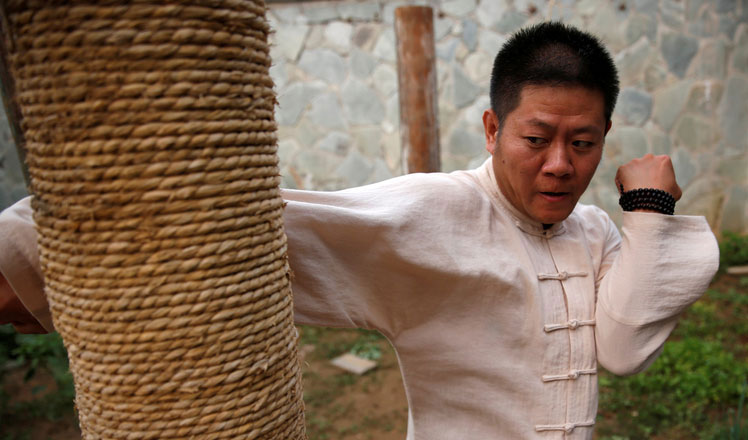US women shift abortion preferences
Updated: 2016-11-01 10:29
By Reuters(China Daily USA)
|
||||||||
American women are ending pregnancies with medication almost as often as with surgery, marking a turning point for abortion in the United States, data reviewed by Reuters shows.
The watershed comes amid an overall decline in abortion, a choice that remains politically charged in the United States, sparking a fiery exchange in the final debate between presidential nominees Hillary Clinton and Donald Trump.
When the two medications used to induce abortion won US approval 16 years ago, the method was expected to quickly overtake the surgical option, as it has in much of Europe. But US abortion opponents persuaded lawmakers in many states to put restrictions on their use.
Although many limitations remain, innovative dispensing efforts in some states, restricted access to surgical abortions in others and greater awareness boosted medication abortions to 43 percent of pregnancy terminations at Planned Parenthood clinics, the nation's single largest provider, in 2014, up from 35 percent in 2010, according to previously unreported figures from the nonprofit.
The national rate is likely even higher now because of new federal prescribing guidelines that took effect in March. In three states most impacted by that change - Ohio, Texas and North Dakota - demand for medication abortions tripled in the last several months to as much as 30 percent of all procedures in some clinics, according to data gathered by Reuters from clinics, state health departments and Planned Parenthood affiliates.
Among states with few or no restrictions, medication abortions comprise a greater share, up to 55 percent in Michigan and 64 percent in Iowa.
Denise Hill, an Ohio mother who works full time and is pursuing a college degree, is part of the shift.
Hill, 26, became extremely ill with her third pregnancy, sidelined by low blood pressure that made it challenging to care for her son and daughter. In July, eight weeks in, she said she made the difficult decision to have a medication abortion. She called the option that was not available in her state four months earlier "a blessing".
The new prescribing guidelines were sought by privately-held Danco Laboratories, the sole maker of the pills for the US market. Spokeswoman Abby Long said sales have since surged to the extent that medication abortion now is "a second option and fairly equal" to the surgical procedure.
"We have been growing steadily year over year, and definitely the growth is larger this year," Long said.
Women who ask for the medication prefer it because they can end a pregnancy at home, with a partner, in a manner more like a miscarriage, said Tammi Kromenaker, director of the Red River Women's Clinic in Fargo.
Medication abortion involves two drugs, taken over a day or two. The first, mifepristone, blocks the pregnancy sustaining hormone progesterone. The second, misoprostol, induces uterine contractions. Studies have shown medical abortions are effective up to 95 percent of the time.
Approved in France in 1988, the abortion pill was supposed to be a game changer, a convenient and private way to end pregnancy. In Western Europe, medication abortion is more common, accounting for 91 percent of pregnancy terminations in Finland, the highest rate, followed by Scotland at 80 percent, according to the Guttmacher Institute, a nonprofit research organization that supports abortion rights.
In the United States, proponents had hoped the medication would allow women to avoid the clinics that had long been targets of protests and sometimes violence.
But Planned Parenthood and other clinics remain key venues for the medication option. Of the more than 2.75 million US women who have used abortion pills since they were approved in 2000, at least 1 million got them at Planned Parenthood.
Many private physicians have avoided prescribing the pills, in part out of concern that it would expose their practices to the type of protests clinics experienced, say doctors, abortion providers and healthcare organizations.
At the same time, the overall US abortion rate has dropped to a low of 16.9 terminations per 1,000 women aged 15-44 in 2011, down from 19.4 per 1,000 in 2008, according to federal data.
- Regular China-South Asia freight train launched
- Police swoop on Paris migrant camp after Calais Jungle clearout
- Regular China-South Asia freight train launched
- South Korean prosecutors arrest woman at centre of political crisis: media
- EU, Canada sign landmark deals to enhance economic, political partnership
- Wife raises funds to search for missing sailor

 Obamas host White House Halloween for children
Obamas host White House Halloween for children
 China Fashion Week: Liu Yong Exclusive
China Fashion Week: Liu Yong Exclusive
 Top 5 collaborating countries in Belt and Road Initiatives
Top 5 collaborating countries in Belt and Road Initiatives
 Hand-carved buckets face possible extinction in Zhejiang
Hand-carved buckets face possible extinction in Zhejiang
 Jet fighters and bombers ready for Air Show China
Jet fighters and bombers ready for Air Show China
 The World in photos: from Oct 24 to Oct 30
The World in photos: from Oct 24 to Oct 30
 Through the lens: The life of a kung fu master
Through the lens: The life of a kung fu master
 In pics: Top 10 Chinese cities in 2016
In pics: Top 10 Chinese cities in 2016
Most Viewed
Editor's Picks

|

|

|

|

|

|
Today's Top News
US election rhetoric unlikely to foreshadow future US-China relations
'Zero Hunger Run' held in Rome
Trump outlines anti-terror plan, proposing extreme vetting for immigrants
Phelps puts spotlight on cupping
US launches airstrikes against IS targets in Libya's Sirte
Ministry slams US-Korean THAAD deployment
Two police officers shot at protest in Dallas
Abe's blame game reveals his policies failing to get results
US Weekly

|

|







